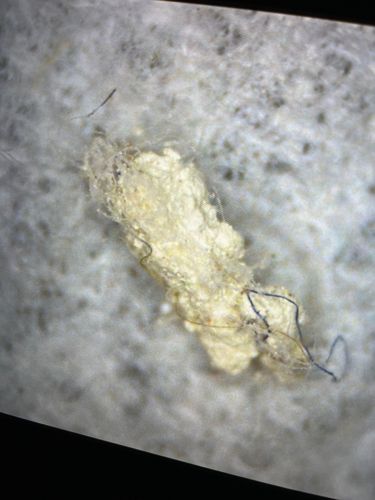Case-bearing Clothes Moth (larva)
Scientific Name: Tinea pellionella
Order & Family: Lepidoptera (moths and butterflies), Tineidae (fungus moths and clothes moths)
Size: Larvae grow up to 10-14 mm in length, with their case being slightly larger.

Natural Habitat
Indoors, in dark, undisturbed areas such as closets, attics, storage chests, and under furniture where natural fibers are present.
Diet & Feeding
Natural fibers, including wool, silk, fur, felt, and feathers. They are known household pests that feed on clothing, carpets, upholstered furniture, and stored textiles.
Behavior Patterns
Case-bearing clothes moth larvae build and carry a portable case made of silk and fabric fibers. They extend their head and legs from one end to feed, and retreat fully inside when disturbed. They move by dragging their case along the substrate. Adults are nocturnal, weak flyers and typically remain close to where they emerged. The larval stage is responsible for all the damage.
Risks & Benefits
Risks: Significant pest of textiles and stored natural fibers, causing damage to clothing, carpets, and other household goods. No direct health risks to humans. Benefits: None known for humans; they are considered purely a pest.
Identified on: 9/3/2025